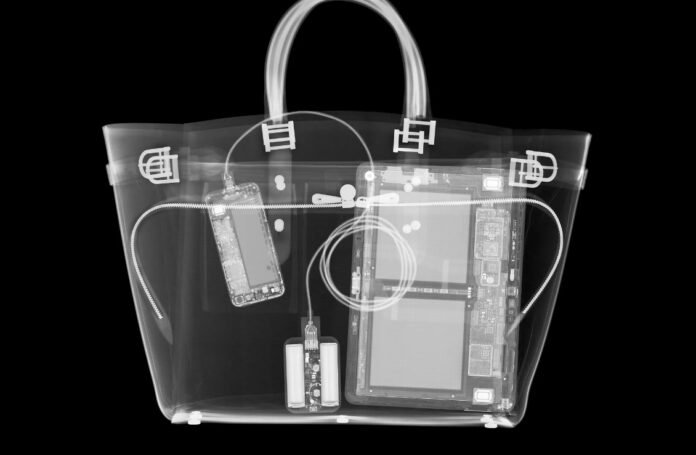In an age where a smartphone can reveal more about a person than their passport ever could, crossing into the United States has become a uniquely fraught experience for travelers concerned with digital privacy. From journalists to researchers and tourists alike, many are now taking extreme measures to shield their data—not just from hackers or foreign surveillance, but from U.S. Customs and Border Protection (CBP) officers themselves.
The border, it turns out, is a legal gray zone when it comes to the Fourth Amendment. And in the wake of the second Trump administration’s renewed focus on immigration enforcement and national security, digital scrutiny at ports of entry has become more intense—and more invasive.
For privacy-minded travelers, the question is no longer whether you have something to hide, but how much you’re willing to reveal just to step onto American soil.
A New Era of Surveillance at the Border
Security expert Ryan Lackey, who once reserved his most hardened security protocols for trips to authoritarian states like China and Russia, now says the U.S. warrants similar precautions. Before crossing into the country, he wipes his devices clean and travels with minimal, compartmentalized data. For every destination, he keeps separate, stripped-down travel gear—ensuring he can analyze each device for tampering once he’s home.
“If I thought I were a likely target, I’d treat entering America like entering any hostile surveillance state,” says Lackey.
His concerns are not unfounded. Since early 2025, a growing number of foreign nationals—including EU citizens and even legal U.S. residents—have reported being detained or denied entry after border agents inspected their devices. In one case, a French scientist was reportedly turned away after CBP reviewed messages in which he criticized U.S. research policy.
With the Trump administration eyeing a sweeping new “travel ban” covering over 40 countries, experts warn that device searches will only become more aggressive and routine. This tightening grip on borders, coupled with CBP’s historically broad powers at ports of entry, poses an unprecedented threat to digital privacy—not just for foreigners, but for Americans too.
What the Law Doesn’t Protect
Despite constitutional protections against unlawful searches and seizures, the U.S. border operates under a different set of rules. Courts have long granted CBP greater authority to conduct searches without warrants or probable cause in these “border zones.”
CBP divides device inspections into two categories: “basic” manual searches and more invasive “advanced” ones, which involve connecting your phone or laptop to forensic tools. Though the agency claims advanced searches require “reasonable suspicion,” travelers are often left without clarity—or recourse—if their devices are taken, copied, or analyzed without their consent.
And while U.S. citizens technically can’t be barred entry for refusing to hand over passwords, they can still be detained for hours—or even have their devices held for months—while investigators attempt to crack encryption. Green card holders, according to the ACLU’s Nathan Wessler, enjoy similar protections. Foreign visitors, however, are in a much tougher spot: refusal to unlock a phone or decrypt a laptop could mean being sent right back home.
How to Travel Smarter (and Safer)
So how can travelers protect their privacy without getting caught in a Kafkaesque border ordeal? There’s no foolproof answer, but experts recommend several best practices:
1. Minimize What You Bring
The less you carry, the less they can take. If you’re concerned about sensitive information, consider traveling with a separate “clean” device—ideally one that contains only the data and apps you need for your trip. Do not link it to personal cloud accounts, and if you must use an Apple ID or Google account, create one just for travel.
2. Encrypt Everything
Use full-disk encryption tools like FileVault (Mac), BitLocker (Windows), or Veracrypt. On mobile devices, avoid biometric locks (like FaceID or fingerprints) in favor of long, complex alphanumeric passcodes. Crucially, shut down your devices before reaching customs—encryption only protects your data when the device is powered off.
3. Separate and Hide Sensitive Apps
Modern operating systems allow users to compartmentalize or hide apps. Android’s “Private Spaces” and Apple’s hidden folders feature offer an extra layer of protection for sensitive content. Still, remember: determined border agents may still access these areas during advanced searches.
4. Keep Devices Updated
Outdated software is a goldmine for forensic tools like Cellebrite or GrayKey, which can exploit known vulnerabilities to bypass encryption. Before traveling, update your operating system to the latest version to reduce your risk.
5. Communicate Ahead of Time
If there’s any chance you may be detained, alert a trusted contact—preferably someone with access to legal support—before you enter customs. Losing access to your device may mean losing your only way to call for help.
6. Log Out and Back Up
Consider logging out of cloud-based apps like Dropbox, Google Drive, or iCloud before travel. You can back up your data and remove it from your devices in advance. If agents request access, you’ll have little or nothing to offer up.
Privacy Versus Access: A Personal Trade-Off
Ultimately, crossing the U.S. border today means making a personal decision about your priorities. For non-citizens, that might mean choosing between protecting your privacy and being allowed entry. For Americans, it could mean enduring long detentions to safeguard your personal data.
“There’s no one-size-fits-all answer,” says Wessler. “But the key is to understand your rights and weigh your risk. Sometimes the best defense is simply not carrying anything worth taking.”
Until the Supreme Court addresses digital privacy rights at the border, the legal landscape remains unsettled—and for travelers, so does the risk. But with preparation, discretion, and a little digital hygiene, you can cross into the United States with your privacy at least partially intact.
Just don’t assume your phone is safe once you land.




